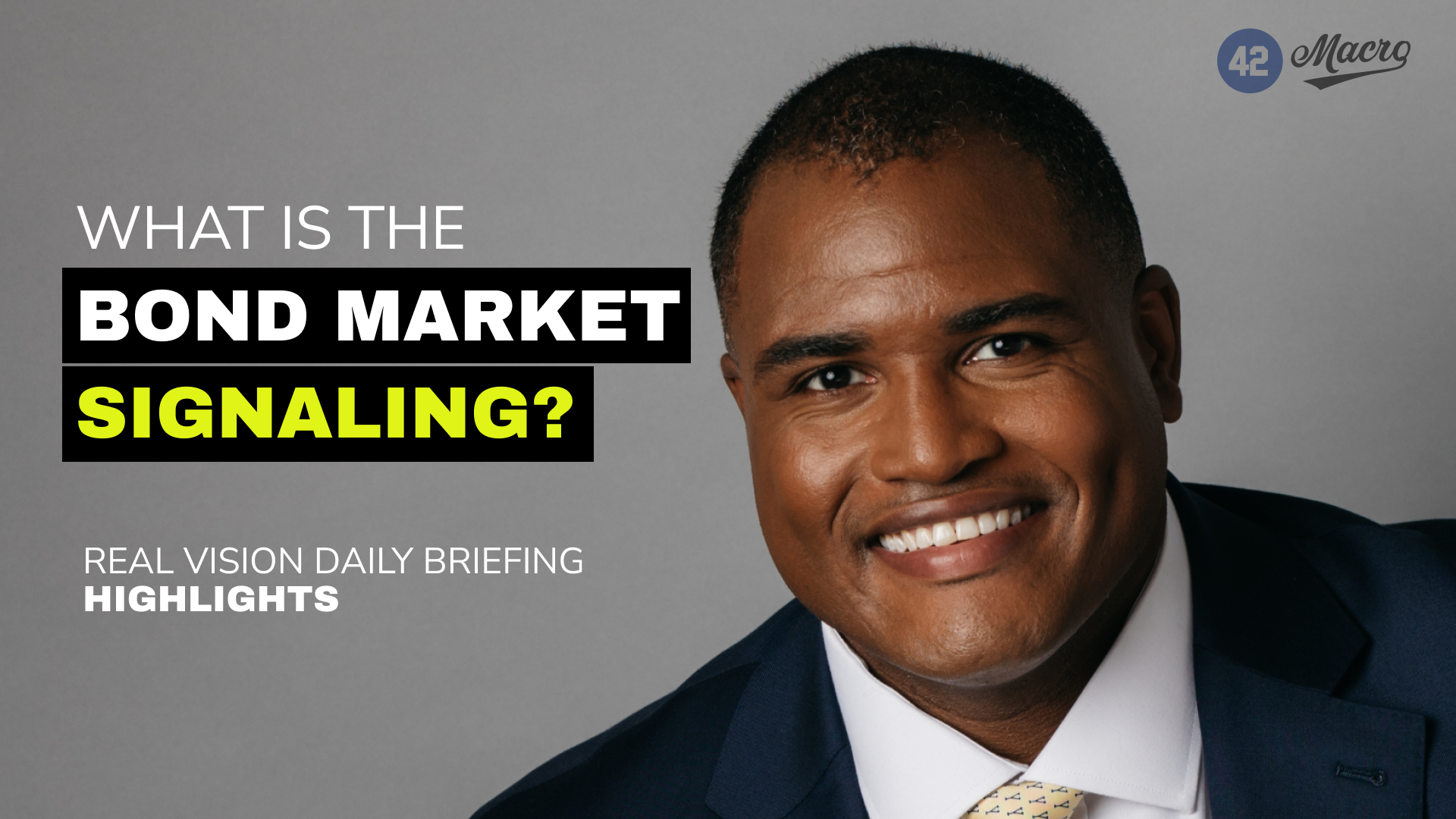Darius recently sat down with Ash Bennington on Real Vision’s Daily Briefing to explore the bond market, inflation, FOMC, and more.
If you missed the interview, here are three takeaways from the conversation that have significant implications for your portfolio:
1. The Resilient US Economy Is Likely To Perpetuate The Bear Steepening in The Bond Market
The economy has been and will continue to be resilient for the following ten reasons:
- Near-record cash on household balance sheets
- Near-record cash on corporate balance sheets
- Private sector income and wealth have outpaced inflation throughout this business cycle
- Limited credit cycle vulnerabilities
- Limited exposure to the volatile manufacturing sector
- Longer “long and variable lags”
- A perfect storm for new housing developments
- Bidenomics
- Immigration
- Labor hoarding
We expect the resilient US economy theme will continue for the next three to six months and continue to perpetuate the bear steepening in the bond market.
2. We Challenge The Fed’s New Economic Projections
This week’s FOMC meeting produced a “goldilocks” summary of economic projections:
- The FOMC hiked its 2024 and 2025 median dot 50 bps each.
- The FOMC now sees only two rate cuts in 2024 and seven cuts by the end of 2025, down from four and nine cuts, respectively.
- The FOMC raised its median real GDP estimates by more than double to 2.1% for 2023 and by +40bps to 1.5% for 2024.
- The FOMC lowered its median unemployment rate estimate by -30 bps to 3.8% for 2023, -40bps to 4.1% for 2024-25, and projects unemployment at 4.0% in 2026.
- The FOMC still estimates core PCE will decelerate to 3.7% by year-end, 2.6% by 2024, 2.3% by 2025, and 2.0% by 2026.
With these projections, the Fed implicitly states that we will get more growth and better labor market conditions while still having a soft landing in inflation.
We disagree with the Fed’s view on this, as our research shows that inflation typically breaks down six to eight months into recession.
3. Is 3% the new 2%?
Our secular inflation model indicates that we will have 50-100% more trend Core PCE inflation in this decade relative to the last decade.
We track a basket of indicators correlated with the underlying trend of inflation that indicates the underlying trend is headed to 2.5% in this decade.
Additionally, when you weigh the model on each indicator’s impact, the core PCE trend goes from 1.6% to 3.2%, equating to a 3.5% trend in headline CPI.
Our models indicate that 3% may be the new 2% – both in terms of the trend in inflation and the Fed’s likely-to-be-revised inflation target.
That’s a wrap!
If you found this blog post helpful:
- Go to www.42macro.com to unlock actionable, hedge-fund-caliber investment insights.
- RT this thread and follow @DariusDale42 and @42Macro.
- Have a great day!


